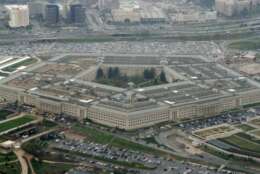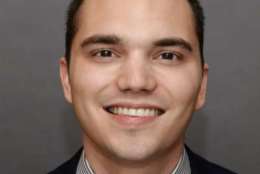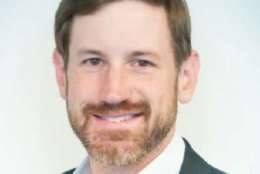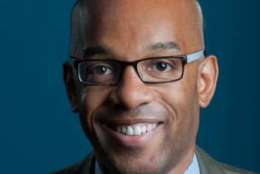Cybersecurity
-
Steve Battista, group lead at MITRE, joins host John Gilroy on this week's Federal Tech Talk to discuss cybersecurity and a new set of services that allows for the sharing of information on cyber threats. July 18, 2017
July 17, 2017 -
Maxwell Air Force Base in Alabama is teaming with AT&T to use internet of things and smart city technologies to make the base run more smoothly. Federal News Radio’s Scott Maucione spoke with AT&T Air Force Client Executive Vice President Rocky Thurston and Maxwell’s 42nd Mission Support Group Commander Col. Don Lewis on Federal Drive with Tom Temin about the updates.
July 17, 2017 -
Today is the day White House asked agencies to submit their framework implementation action plans for the Trump administration's executive order on cybersecurity. What's new is having an agency executive responsible for all of the metrics and the addition of risk management. Tom Jones, federal systems engineer at Bay Dynamics, provides insight on Federal Drive with Tom Temin.
July 14, 2017 -
The Homeland Security Department Science and Technology Directorate's cybersecurity division is in a more comfortable place now with many of its top research and development priorities. It's transitioned more than 75 major projects to practice and is finding a solid footing in the Silicon Valley start-up space.
July 13, 2017 -
Before the Obama administration left office in December, it left a series of reports for the incoming Trump administration.
July 13, 2017 -
Don Maclean, the chief cybersecurity technologist at DLT Solutions, argues that the EO needs more carrot and stick to improve executive accountability of cybersecurity.
July 12, 2017 -
Without a serious effort at automation, the many segments of the cybersecurity response and kill-chain threaten to overwhelm security operations and information security staffs.
July 11, 2017 -
Clark Campbell, the vice president for public sector for BDNA, argues that if agencies don’t address end of life technology, the next cyber attack could be much worse.
July 11, 2017 Dave Mihelcic, federal chief technology and strategy officer for Juniper Networks, discusses innovation, information assurance, security, integration and how his company can help agencies move to the cloud. July 11, 2017
July 10, 2017-
John Chirhart, the federal technical director of Tenable, argues for a fundamental change in the way agencies approach cybersecurity for the long-term.
July 10, 2017 -
It seems like big-time cyber attacks are getting worse and more frequent. The federal government seems to have avoided the most recent ones. Vince Crisler, CEO of Dark Cubed, tells Federal Drive with Tom Temin how federal managers can keep their organizations safe.
July 10, 2017 -
Near-weekly, worldwide cybersecurity threats underscore the importance of network, end-point, and application monitoring. Federal agencies have worked under a policy of continuous monitoring/continuous diagnostics and mitigation for a decade. But given the seemingly unending growth in attack vectors, the spread of internal infrastructure to commercial cloud providers, and the rise of insider threats – they’ve got to up the game into what might be called advanced cyber monitoring.
July 05, 2017 -
The Defense Department has started testing one potential technology to replace the Common Access Card. This one purports to identify users by the ways in which they manipulate their mouse and type on their keyboards.
July 05, 2017 -
The Office of Management and Budget is writing a new consolidated policy on identity management. The forthcoming guidance is designed to give agencies one place to view OMB's collection of identity management policies and lessons learned over the past several years.
July 04, 2017 -
Who is actually responsible for that cyber attack that hit your organization? Often it comes down to guess work. Few people have much faith in the accuracy of the attribution. So what to do? John Davis II, senior information scientist at the Rand Corporation and co-director for scalable computing and analysis, joined Federal Drive with Tom Temin with recommendations.
June 30, 2017














